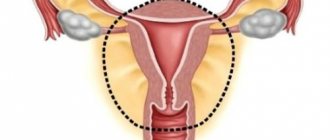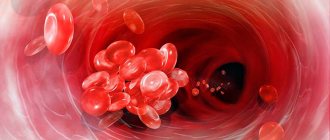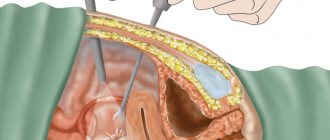Adenomyosis is the third most common gynecological disease, which leads to uterine deformation and (in advanced cases) to infertility. Often the disease is diagnosed when the ability to conceive and give birth on their own has already been lost. Let's look at how adenomyosis and IVF are combined, and what to do to increase your chances of conception.
What is adenomyosis?
Adenomyosis is a disease in which the inner layer of the uterine mucosa - the endometrium - grows into the muscular layer of the uterine wall - the myometrium. Adenomyosis is a type of endometriosis; experts call it genital endometriosis. It is unpleasant that in addition to the negative impact on the uterus, endometriosis worsens the quality of maturing eggs. Eggs suffer due to hormonal imbalance and oxidative stress, active production of biological substances that damage the genetic apparatus of oocytes.
If we turn to Latin, because we all know that the names of modern diseases have an almost exhaustive explanation in their Latin interpretation, we learn that “adeno” is gland, “myo” is muscle tissue, “oz” is degenerative changes. Thus, adenomyosis is glandular degeneration of muscle tissue.
It is easy to guess that with altered muscle tissue of the uterus, difficulties may arise with the onset and carrying of pregnancy - it is not so easy for an embryo to attach to a pathologically altered area of uterine tissue. Adenomyosis can also be localized on the cervix - this is cervical endometriosis. That is, pregnancy may not occur because the fertilized egg simply cannot survive in such a stressful environment. However, with the help of doctors, it is possible to become pregnant with adenomyosis; you need to seek help from specialists - reproductive specialists.
If we are not planning a pregnancy yet, it is still necessary to regularly visit the gynecologist - after all, adenomyosis (like any other gynecological diseases) may not manifest itself at all, but spread more and more throughout the body with each menstruation. And it is better to “catch” any disease at the earliest stage of development. So, what should we pay attention to so as not to miss the “alarm bells” of adenomyosis?
The effect of endometriosis on the reproductive system
Any imbalance in a woman's reproductive system can cause irreversible processes.
The growth of the internal endometrium lining the uterus provokes inflammation, which subsequently contributes to the onset of the adhesive process and infertility.
The causes of endometriosis are not fully understood, but the main prerequisites for its development are:
- hormonal imbalance;
- traumatic disruption of the endometrium of the uterus by curettage, abortion;
- uncontrolled wearing of an intrauterine device and taking contraceptives.
The pathology is characterized by unexpressed symptoms, the main of which are cycle failure, acyclic bleeding, problems in the process of bearing a child and infertility. Even with successful conception, the disease causes spontaneous miscarriage, placental abruption, and abnormalities in fetal development.
A pathological change in the endometrium reduces the chances of attachment of the fertilized egg to the uterine walls; an inflammatory focus in the abdominal cavity leads to the formation of adhesions, causing tubal obstruction. There is a disturbance in fertility, ovulation processes, and menstruation.
The functioning of the reproductive system can be improved with hormonal therapy in only a third of all cases of endometriosis. Therapy started in the first stages of development of the pathology allows you to restore the cycle, normalize ovulation, and make conception possible. In other cases, treatment with hormones does not bring results; surgical cleaning is used, which eliminates the pathological growth of tissue, but does not promote fertilization, since the adhesive process remains.
Symptoms of adenomyosis
It is necessary to exclude adenomyosis immediately and consult a specialist if:
- we have heavy and prolonged menstrual bleeding
- we experience severe cramping pain during the menstrual period
- we periodically, and even more so regularly, feel pressure, tension and uncomfortable fullness in the lower abdomen
- bleeding occurs outside of the menstrual period
Each of us should know about the possible causes of adenomyosis. In modern gynecology, this disease is increasingly explained by hormonal disorders in the woman’s body. The hereditary factor and the negative impact of the external environment play a role. The combination of these factors increases the risk of developing the disease, and, accordingly, reduces the chances of pregnancy.
Let us note that hormonal disorders in the vast majority of cases have an adverse effect on the ability of each of us to become pregnant, because they provoke disruption of the menstrual cycle and ovulation. However, once again we say with confidence that it is possible to get pregnant with adenomyosis; the answer to the question of whether pregnancy is possible with adenomyosis very often has a positive answer. You need to make an accurate diagnosis, undergo a course of treatment - and everything will work out.
Treatment of adenomyosis before the procedure
To adequately treat the disease before IVF, it is necessary to find out what form the pathology has taken and how far it has gone. The following methods are used for diagnosis:
- gynecological examination (with speculum);
- colposcopy, diagnostic hysteroscopy with sample collection for histology;
- Ultrasound;
- MRI for suspected fibroids;
- analysis of vaginal microflora.
Depending on the results obtained, 2 types of treatment for adenomyosis are prescribed before IVF: conservative and surgical. Conservative therapy boils down to taking hormonal drugs to suppress the formation of estrogen, the steroid hormone that most affects the endometrium. The pathological endometrium reacts to hormonal influences, gradually dying.
Drug treatment is carried out for 3-12 months, causing amenorrhea - absence of menstruation. The cycle is restored after stopping the drugs, along with the return of estrogen production to normal.
The following groups of hormonal drugs are prescribed:
Oral contraceptives high in ethinyl estradiol mimic pregnancy and reduce estrogen levels. The drug is prescribed continuously (tablets must be taken every day) for a long period - up to 1 year. Group drugs: Yarina, Midiana, Femoden, Janine, Regulon.
Androgens are better than other substances in reducing the risk of relapse, but due to unpleasant side effects they are rarely prescribed and in difficult cases. Group drugs: Danazol, Danol.
Progestogens are the only ones on the list that do not affect the functioning of the ovaries, so menstruation occurs as scheduled; in this case, the substance effectively affects the spread of the endometrium. Group drugs: Gestrinone, Dydrogesterone, Medrogxyprogesterone, Duphaston, Norkolut.
- GnRH analogues are poorly absorbed through the gastrointestinal tract, so they are available in the form of injections and nasal sprays. Constant monitoring of ethinyl estradiol in the blood is required, since the likelihood of developing osteoporosis is high. Group drugs: Goserelin, Leuprorelin, Triptorelin, Buserelin, Nafarelin.
Depending on the form and degree of adenomyosis, as well as on the basis of contraindications and medical history, the doctor selects the drug and dosage regimen with the greatest effectiveness. You cannot self-medicate.
The second possible treatment option is surgery. A minimally invasive operation is performed - laparoscopy, during which the affected areas are locally removed in focal and nodular forms of adenomyosis. It is not uncommon for a relapse to occur within several years after surgery. Doctors try to preserve the organ as much as possible, but sometimes this is impossible, and with advanced diffuse adenomyosis, the uterus must be removed.
A course of treatment
The choice of possible effective treatment depends on the degree of development of adenomyosis in our body. Adenomyosis in the initial stages is usually not an independent cause of infertility, that is, with initial adenomyosis you can get pregnant. Hormonal and anti-inflammatory therapy may be sufficient to create conditions for embryo implantation. In severe forms with changes in the uterine cavity, the pregnancy rate is low. Is pregnancy possible with severe forms of adenomyosis? It’s unlikely, but women with such a disappointing prognosis should not lose hope of motherhood—the doctor often recommends an alternative program using a surrogate mother.
IVF for different types of disease
There are 4 forms of adenomyosis:
- focal;
- diffuse;
- nodal;
- diffuse-nodular (mixed).
The focal form of the disease is manifested by point lesions of the uterine cavity.
The diffuse form is characterized by the growth of the endometrium into the walls of the organ in the form of blind pockets. The pockets are of different depths; fistulas into the pelvic cavity are possible. In this case, the pathological process occurs evenly throughout the cavity, without forming clear foci. This is the most difficult type of adenomyosis to treat.
Nodular adenomyosis is characterized by the growth of glandular epithelium into muscle tissue, with the formation of dense nodes that are filled with blood or exudate.
The diffuse-nodular form is represented, respectively, by a combination of diffuse and nodular.
Based on the depth of penetration of the endometrium into muscle tissue, 4 stages are distinguished:
I degree - the submucosal layer is affected;
- II degree - less than half the depth of the muscle layer is affected;
- III degree - more than half the depth of the muscle layer is affected;
- IV degree - the entire muscle layer is affected, the serous layer of the organ is involved, penetration into the peritoneum and neighboring organs is possible.
The lower the stage of adenomyosis, the less damage to the uterus, which means the greater the chance of returning reproductive health and the success of IVF. The most favorable prognosis is in the initial stages, especially nodular and focal forms of the disease.
It is more difficult with stages 3 and 4 of the disease. The more deformed the surface of the uterus is, the more difficult it is for the egg to attach to the epithelium, even after recovery from adenomyosis and the use of IVF. With the latest degrees of the diffuse form, there is little chance - treatment for severe cases involves surgical intervention, including removal of the uterus and even the ovaries.
Diagnosis and treatment of endometriosis
According to modern medical standards, an accurate diagnosis of endometriosis requires laparoscopy or hysteroscopy to see the lesions, take a biopsy and perform a microscopic examination. But often the complaints and course of the disease are so specific that the diagnosis is quite reasonably made based on the clinical picture.
Endometriosis often reduces the chances of conception and pregnancy. This is due to various complications that accompany or are part of endometriosis. In 80% of patients, adhesions and deformation of the fallopian tubes occur. More subtle changes include a decrease in LH levels in the blood and the follicle itself. In addition, the level of the female sex hormone estradiol increases, which worsens the function of the corpus luteum.
In addition, numerous studies conducted in patients who underwent IVF against the background of endometriosis have shown that during IVF in women with endometriosis, the quality of oocytes (eggs), their ability to fertilize and the ability of the resulting embryos to implantation is reduced.
Finally, since endometriosis causes immune abnormalities in the body, antisperm antibodies are often found in the blood and peritoneal fluid of women.
As for the condition of the uterus itself, the inferiority of the endometrium (the mucous membrane of the uterus), as well as autoimmune processes in it, are often detected.
To combat endometriosis as such and as a cause of infertility, a combination of surgical and hormonal treatment methods is currently used. Laparoscopy is performed, removing foci of endometriosis as much as possible. Hormone therapy is then prescribed to temporarily suppress estrogen production. For this purpose, modern drugs are used - analogues of gonadotropin-releasing hormone, such as Buserelin, Decapeptyl and others. Since the drugs are available in various forms, the doctor has the opportunity to vary the route of administration, which can be justified from a clinical point of view.
Deposited forms of drugs are most convenient. The depot ensures a constant concentration of the drug in the blood for a long time, which is necessary for the disappearance of foci of endometriosis. Statistics conducted in many IVF centers (including the MAMA clinic) show that the pregnancy rate in an IVF cycle after a course of hormone therapy in patients with endometriosis significantly increases.
Preparation
Adenomyosis is a serious disorder that requires a woman to undergo a course of treatment before undergoing IVF. To do this, the patient is prescribed to take hormonal drugs that stop the growth of the endometrium, and surgery may also be indicated to remove nodes and adhesions.
More than 30% of women after successful treatment of adenomyosis can become pregnant naturally. If pregnancy does not occur, then the patient is indicated for in vitro fertilization.
Indications for IVF for adenomyosis are the following situations:
- absence of pregnancy within a year after the course of treatment;
- obstruction of the fallopian tubes;
- lack of ovulation;
- male factor.
To undergo IVF for adenomyosis, a woman must undergo laparoscopy. Using this method of diagnosis and treatment, it is possible to detect adhesions and overgrown endometrium on the uterine mucosa and remove these disorders.











